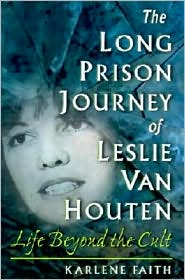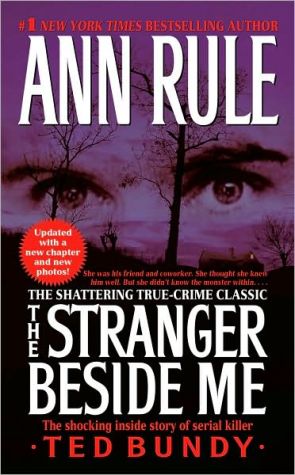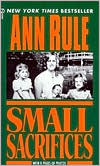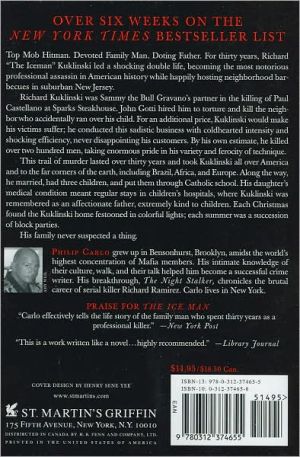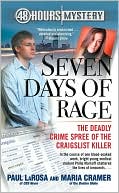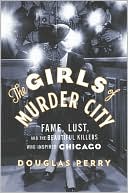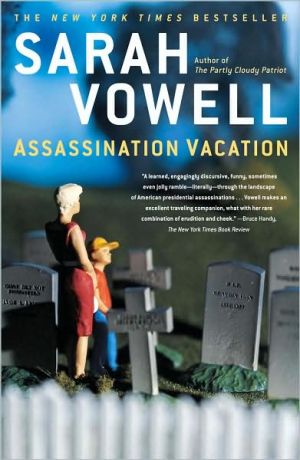The Long Prison Journey of Leslie van Houten: Life Beyond the Cult
At the age of twenty-one, Leslie Van Houten was sentenced to death, along with Charles Manson and his other disciples, for the infamous murder rampage spanning two nights in August 1969. Leslie, who was present at the Rosemary and Leno LaBianca stabbings, serenely accepted her sentence, wishing only that she had better served Manson in carrying out his apocalyptic vision of "Helter Skelter." When the United States temporarily suspended its death penalty, her sentence for murder conspiracy was...
Search in google:
The first in-depth look at how a girl next door became a member of Charles Manson's cult, sentenced to life in prison. Library Journal Leslie Van Houten was an accomplice in Charles Manson's murder rampage in August 1969. Saved from death by the temporary suspension of capital punishment, she remains incarcerated, having been repeatedly denied parole. In this account of Van Houten's 30 years in prison, Faith (criminology, Simon Fraser Univ.; Unruly Women: The Politics of Confinement and Resistance), who taught Van Houten at the California Institution for Women, argues that it is now time for her release. Faith describes Van Houten's personal growth, her remorse for the murders, and her emotional separation from Manson. She also gives readers a perceptive sketch of Manson, whose years in various institutions taught him how to manipulate others so that he could eventually control the minds of his followers. When it comes to Van Houten's early life, however, Faith does not appear to have as much information. True, Van Houten grew up in a time of cultural upheaval, but why was her quest for a father figure so desperate? Why was she so taken in by Manson that she could kill for him? After three decades in prison, Van Houten may be ready to return to society; it will be up to the California parole board to decide. Recommended for public and academic libraries. Frances Standiford, Green Haven Correctional Facility Lib., Stormville, NY Copyright 2001 Cahners Business Information.
\ \ Chapter One\ \ \ Getting\ Acquainted\ \ \ \ When the Manson murders broke in the press in late summer 1969, my children and I were in Jamaica, where I was doing research with the Rastafarians. The press there didn't dwell on the murders, but when we returned to California we encountered the U.S. media's onslaught that lasted for over a year. Following sentencing in 1971, Leslie Van Houten, Pat Krenwinkel, and Susan Atkins were sent to the California Institution for Women (CIW), to await execution.\ As a History of Consciousness graduate student at the University of California at Santa Cruz, I was then teaching in Soledad, a men's state prison, and preparing to go to CIW the following spring to do research and teach. This would be where my life converged with Leslie's.\ The California Institution for Women is situated about sixty miles east of Los Angeles, in "Corrections Valley." Three other prisons (Chino adult men's prison, a youth prison, and a prison for narcotics offenders) dot this stretch of flatlands in the midst of pastures and orchards. For much of the year the heat is exacerbated by the heavy smog that blows in from L.A. and settles over the valley. The stench of manure hangs in the thick, deadly-still prison air. It was on such a day, in late spring of 1972, that the warden called me in to ask if I'd be willing to tutor the three women who would be held indefinitely in her prison.\ The California State Supreme Court had abolished the death penalty in February 1972. That decision was confirmed in June by a U.S. SupremeCourt decision that outlawed capital punishment as cruel and unusual. (Capital punishment was not revived in the United States for another four years.) This decision meant that the "Manson girls" were now condemned to life in prison. Since there was not yet legislation allowing for life imprisonment without the possibility of parole, this meant they also had the possibility of eventual release.\ My first visit to the old death row at CIW in 1972 was a top-security operation, a long escorted walk ending at a small brick structure located in an isolated corner of the grounds, across a grassy yard from the psychiatric unit. The strict surveillance procedures surrounding this visit surprised me, because I'd been doing research and volunteering as a tutor/ adviser at the prison for months, with independent, unobstructed easy access to every other part of the prison. Moreover, I was going to the unit at the direct request of the warden. On this occasion, two security people, a man and a woman, gave me a body search before I was escorted from the administration building by a uniformed, armed guard and the associate warden (both men). We stopped at locked gates and fences en route, and at the guard tower, for identity checks. Women I worked with who had heard I was going "over there" were watching the maneuvers through the shrubbery at the perimeter of the main prison grounds.\ The Special Security Unit (SSU) staff members were expecting me, having received relayed radio reports as we crossed the grounds. They were friendly, a man and a woman, as they unlocked the outer door after we rang. As soon as I was safely deposited in the tiny entryway of the maximum of maximum-security segregation units, and despite the presence of the somber associate warden, who stayed, I felt the atmosphere suddenly change to sweetness and light.\ The five women in SSU had their own guards, who did their jobs efficiently and cheerfully. On this first visit, the guards chatted with me pleasantly, welcoming me. They explained the security system and the women's restrictions, such as the rule that all the women could not be out of their cells at once (a rule they soon changed for our "school"). They processed my paperwork without a fuss, while I listened to the women's voices from the cell unit beyond the entranceway—youthful, softly cheerful, not at all the voices of brutal murderers. My first impression was how relaxed it felt to me, even though it was a spartan, dreary little jail.\ The associate warden kept a tactful distance while the male SSU guard took me to meet the women individually, through the bars of their cells, each of which was six feet by nine. Each woman had a metal-framed single bed attached to the floor, an open toilet, and a miniature sink; their few possessions were in cardboard boxes. I was impressed at how the guard treated the prisoners with the same respect they showed me, the visitor.\ After meeting each woman, I was positioned on a folding chair in front of the cells where they could all see me. On this exceedingly hot and humid day, over 110 degrees Fahrenheit, everyone's eyes were red and smarting from the toxins in the polluted air. In a chorus from their cells, the three "Manson girls" offered me a glass of cold grape Tang, a powdered drink popular at the time. When I said, "Yes, thanks," one of the guards went immediately to a tiny refrigerator in the entryway and got it for me. I was in their home.\ I found the three "Manson girls" to be instantly engaging, a blur of human vitality behind the steel bars, which separated me from them and all of them from each other. The faces, mannerisms, voices, and remarks all blended together as if they were one person—Pat-Leslie-Susan. The two other women, Jean and Linda, had also been convicted of murdering women, statistically the rarest crime for a woman to commit.\ All five women were friendly, relaxed, and hospitable. They couldn't see each other, but they kept up a lively conversation that included everyone. The congenial and peaceful atmosphere disarmed me. It was a welcome contrast to the negative tensions and punitive attitudes that circulated in the main prison, where there were always a few troublemaking guards or prisoners.\ The warden had asked me to focus my SSU tutorial program on the "Manson girls," because she was sure that the other two women would soon be leaving death row. Because of the public's fear of Manson and her concern about his continued control over them, it was not clear that the "Manson girls" would ever leave this segregated unit. When I met them, they had been incarcerated for almost a year at CIW, after spending the previous year and a half at the Sybil Brand Institute, a women's jail in Los Angeles.\ On our first visit I told the women that their crimes weren't on my agenda. I explained that I was a graduate student researching and tutoring in the main prison, and that I was prepared to set up classes for them if any of them were interested. All three expressed enthusiasm.\ In the preceding two years I'd gone out of my way to minimize my reading or hearing the details of the Manson "family" crimes, but there was no escaping the steady barrage of headlines or the continual discussion on city buses and everywhere. I couldn't reconcile the media's images with the women I faced through the bars to their cells. It was hard to believe that women of their demeanor and apparent disposition could have been involved in the crimes associated with Charles Manson.\ Although at first reluctant, after a few weeks Jean and Linda joined our tutorials. For a short time they remained on death row and, like the "Manson girls," they produced excellent essays. Within months they were transferred to the main prison, and I lost contact with them.\ Our sessions were held as a group. We sat on the floor of a cell we called the schoolroom. Over the following months, I began to see the women as individuals. Leslie later spoke to me about Jean, who, though more than twenty years older than she, had become a trusted friend. Leslie said that Jean taught her how to survive prison life with her spirit intact. "I'd be talking to her, and she would say, `That doesn't make any sense. Explain yourself.' And I knew I couldn't." Ultimately, Jean inspired Leslie to hope that one day she could do something "to bring to light some of the things that can happen to young people."\ On numerous occasions over time, the "girls" did tell me and others of the murders in elaborate detail. Even when hearing about the crimes directly from them, I could not reconcile my sense of who they were with the crimes that they said they committed and for which they were imprisoned.\ \ \ Facing Violence\ \ \ For the LaBianca family and for Leslie's family and friends, the crime is painful history; a man and a woman were killed and that is the reason Leslie is still in prison. In a later chapter I discuss the violence because that is where the public interest in Leslie's story begins. But seldom does brutal crime receive the kind of media coverage—and the resulting merciless sentence—that the Manson "family" crimes received.\ Imagine the following fictional, but in some respects not unusual, brutal double homicide:\ \ \ A middle-aged couple has just arrived home from a party in their unlit, low-income, inner-city neighborhood. Before they can close the door behind them, a neighborhood leather-clad bully bursts into their apartment, followed by his tough-looking but submissive girlfriend. The two men recognize each other from the street. The bully demands money, grabs the woman's purse, and kicks the man to the floor to take his wallet. When the victims put up a brave fight, the bully pulls a knife and instantly kills the man with several stabs in the chest. Then he thrusts the knife toward his girlfriend and orders her to kill the woman, not wanting to be alone with a murder rap. The girlfriend balks, horrified at the first death, paralyzed at the prospect of herself killing someone. The enraged bully plunges the blade into the screaming woman's heart; she dies. Now, putting the knife firmly in his girlfriend's hand, the bully screams at her, "You do it—you ... do it now—do it!" until she too stabs the already dead woman; in hysterics, the girlfriend stabs and stabs—fourteen times.\ Several days later, the newspapers simply report that two people were found in their apartment stabbed to death with multiple wounds; no known witnesses; assailants unknown; police do not as yet have any suspects.\ \ \ In real cases similar to this fictional example we seldom hear another word about the crime. Unlike the sensationalized Tate and LaBianca murders, these victims would be unimportant in terms of newsworthiness, in accordance with the marketing values of commercial media. Given the dynamics of class structures and racism, the mainstream media treat people in low-income ghettos as disposable; they rarely make the news even when they're murdered. Since there is no singular intriguing detail about this (fictional) crime, it would be written off by reporters as a straightforward robbery-murder, probably for drug money.\ Unlike most crimes, murders reported to the police are generally solved. This is partially because police give more attention to this most serious of crimes, and partially because killers and victims usually know one another—as acquaintances, friends, or family—which makes it easier to trace suspects.\ Being killed by a stranger in one's home is a commonly feared but highly unusual way to die. Whatever the location, stranger homicides are the least common type of murder, and generally the most difficult to investigate. They are especially hard to solve when they occur in a home without witnesses. All but 10 to 15 percent of murders in most Western nations are male-on-male or male-on-female. Women rarely kill; when they do, their victim is often an abusive spouse.\ Whatever the victim-killer relationship, investigations and media attention are motivated in significant part by the social status of the murder victim(s) or of the accused. Attention by the media is fueled by the pressures of advertising sponsors to accommodate "public interest"—a public interest that is generated by the media itself. The dominant, commercial media generate lowest-common-denominator definitions of what constitutes the news that is fit to print or air. Famous and/or rich victims or offenders in major crimes will generate attention and guarantee corporate media profits.\ The hypothetical crime described above is basically the same crime that Leslie Van Houten and members of her "family" committed in 1969 against Leno and Rosemary LaBianca. Except that LaBianca was a wealthy, white owner of a grocery chain, and his wife was the co-owner of a boutique. They were killed in their comfortable home in the elite Los Angeles neighborhood called Los Feliz. Three of the four accused (and then convicted) "killers" were clean-cut all-American kids—a Texas farm boy and two girls from California suburbs. The highly sensationalized "Tate murders" had been committed the previous night, and the newspapers linked the two crimes immediately. Because of the failure of the Greater L.A. sheriff and police departments to communicate, however, it was months before police finally linked the crimes, identified suspects, and laid charges.\ Sensationalistic details and dark inferences dominated reportage. The word pig—a common epithet of the day for police and for anyone in power—was written in blood at both the Tate and LaBianca murder sites. Another coded reference—to "Helter Skelter," a Beatles song on their White Album—was left at the LaBianca home. In England, a helter-skelter is a spiral slide on a playground. Manson used the phrase to describe the chaos of the times, a precursor to a race war. The murders were committed just before the Woodstock rock festival, just after the landing on the moon by three astronauts, and amid sustained national protests against the Vietnam war. The Black Panthers were gaining national influence in African-American communities and among leftists. Against this backdrop of heightened social tension and landmark events, the Manson murders dominated the California media for over a year. When the accused were found to have come out of a hippie commune, the attention intensified. The media latched on to people's worst fears about hippies and the antiwar movement. By the end of the trial, Manson's murders were touted as a singular milestone in the annals of homicide.\ After successfully prosecuting four of the accused, Los Angeles District Attorney Vincent Bugliosi wrote a mass-market novel-like book (Helter Skelter) about the murders. At the time, its cover made the promise, "No matter how much you think you know about the Manson case, this incredible book will shock you." It was a best-seller, and is still in print today, replete with inaccuracies due to the defendants' false testimony in court and their own propagation of sensationalized myths. One reviewer describes this book as "a morality play of the highest order, with the crusading prosecutor battling a demonic Manson on one hand and the bumbling of the Los Angeles Police Department (LAPD) on the other." One of Manson's messages, like St. Augustine's, was that he (and everyone) represented the perfect dialectic of God and the Devil, life and death, good and evil, sacred and profane. The symbolism was perfectly geared to a Hollywood sensibility. Through the lenses of the prosecutor, a woefully tragic set of murders became mythic owing to their perversely formulaic entertainment value. Bugliosi went on to oversee the 1976 CBS-TV version of his story, and to make $2,500 per speech (a large sum at that time) on the lecture circuit. The case brought him a celebrity career, but in the process he compromised his reputation as a serious attorney, and he lost a political bid for public office.\ \ \ The Players\ \ \ The media were unrelenting in the attention they gave Charles Manson, Charles "Tex" Watson, Susan Atkins, Patricia Krenwinkel, Leslie Van Houten, and also Linda Kasabian. Linda was present at the Tate murder site, but she didn't participate in the killings, and she received immunity on murder and conspiracy charges in exchange for her testimony. The media also focused on Lynette "Squeaky" Fromme, Sandra Good, Catherine "Gypsy" Share, and other girls who lived on the sidewalk outside the court during the trial.\ When I met Pat, Susan, and Leslie in 1972, they had been incarcerated for almost a year at CIW, after a year and a half at the Sybil Brand jail in Los Angeles. Knowing now that they weren't going to die, they pinned their hopes on soon being able to mix with the other women and to work in the main prison. Their hope grew when Jean and Linda, the two other death row women, were transferred to the main prison a few months after we met. From the three remaining women's point of view, the prison across the yard represented a world of freedom and of opportunity to be useful.\ Like the three "Manson girls," Jean and Linda had been sentenced to death, and their sentences, too, were commuted to life in prison with the temporary abolition of capital punishment in the United States in 1972. Their crimes were serious: Jean killed an elderly woman in her home during a robbery; Linda killed her lover's wife. Like the crimes in which the "Manson girls" were involved, women were Jean's and Linda's victims, which is unusual when women are the offenders. Both Jean and Linda were paroled a few years later, after having served approximately eight and nine years respectively. Even though they were "death-penalty overturns," their release on parole was consistent with that of most individuals convicted of first-degree murder in the 1970s, a crime for which the rate of recidivism is extremely low for both men and women, no matter how many years are served. That Jean and Linda could achieve parole, and receive the same treatment from the board as had prisoners who had not received the death penalty, set a significant precedent—from which, however, none of the "Manson girls" benefited. (In Leslie's case, it's a moot point, as I discuss in chapters ahead.)\ Reality set in when the women were informed that they would not be moved to the general prison population, that until further notice they would live out their years in the same isolated death row cells where they had waited to be transferred to San Quentin to die in the gas chamber. Virginia Carlson, the warden, came in to explain this to them. They had a right to meals, a shower, and an hour outside each day, she told them. "Anything else is a privilege."\ The three women shaved their heads in protest, to no avail. They remained in SSU for four more years. Then, one by one over the course of a few years, they each finally entered the main population, though under tight security for a time.\ When they were left behind in SSU, the "girls" came to appreciate what they did still have. Some of their guards had become friends to them. The women managed to use their time constructively. But they were sociable, active young women who enjoyed people, and the isolation and inaction were painful—as intended.\ What Susan, Pat, and Leslie missed the most at the Special Security Unit, they told me, was contact with other prisoners and access to the admittedly minimal resources and work available in the main prison. They took little comfort in the fact that they were being spared oppressive prison jobs and hassles with abusive guards or prison mates.\ For other prisoners, SSU might not have been so serene, but these three women had been well trained by Manson to "follow the program." They were nonconfrontational, cooperative, and submissive to authority. As Leslie later said to me, "We got along easily with our keepers because we did not challenge or make trouble."\ \ \ The Warden\ \ \ It was Virginia Carlson who asked me to meet with the women in SSU in the spring of 1972. Officially called the Superintendent, she was good-natured in an officious kind of way. Women in the main prison treated her as if she were a kindly but stern housemother in a boarding school. Sometimes they made fun of how prim, proper, and earnest she was; they complained about not getting in to talk with her, her unavailability to them. But they generally expressed more trust in her than in her associate wardens or most of the guards. The warden was running a little town, with everyone doing his or her part most of the time, and more or less getting along superficially, within the parameters of hierarchical, punitive power.\ Carlson earned respect during a legendary summer talent show on the prison lawn. No one recognized her when she came out on the makeshift stage as a glittery Arabian Nights dancing girl, her blond hair in a fancy up-do, her face covered by a veil. The mystery lady, whom everyone assumed to be a prisoner, was a total success with the women. They roared their approval as she danced in a somewhat silly, parodic way, but sexy nevertheless. As the dancing girl lifted her hip in farewell, she took off her veil and put on her glasses. There stood Miss Carlson, smiling broadly. The prisoners went wild. Even though she reverted to her no-nonsense, conservative manner of dress after the show—pumps, a pastel suit, and a quiet hairdo—she won over many women on that day. Carlson proved to have genuine interest in the welfare of the more than six hundred women in her care at CIW.\ As women, Carlson and I had found common ground. It was clear that she viewed the prisoners sympathetically, whatever the nature of their crimes, even if they were obnoxious to her. Long employed by Corrections, she was a line staffer who had worked her way up in a system that pits "us" (the good guys) against "them" (the bad guys). Despite this, she did not reduce the women to "criminal types." She tried to understand the circumstances that resulted in women's incarcerations. She voiced the whole spectrum of inequalities that justify prison sentences for victims. She supported the high court's abortion of capital punishment (which punishment would again be reinstated in 1976). And she cautiously identified with the goals of women's movements, which were just entering the mainstream culture in 1972.\ No bleeding heart, Virginia Carlson was a pragmatist. She believed that any woman, however she had broken the law, was sufficiently punished by losing years of her life in prison. Many lost their intimate relationships and families—even children—in the process. She saw no benefit in exacerbating the fundamental pain of imprisonment with debilitating or deadly disciplinary practices; to do so, she felt, was inhumane, and ineffective in keeping order. She tried to keep order in more constructive ways: by providing the women with a variety of programs that could ease the strain of incarceration, by offering each woman some sense of choice and a feeling of usefulness in her day-to-day prison life. This would not describe her prison as I found it, and prisoners' versions did not match her rosy picture. Her job removed Carlson from day-to-day contact with the women, except for periodic visits to various cell units or self-help group meetings. But she worked at improving the situation at the policy level.\ She wanted the women's years in prison, however few or many, to reeducate, not damage. She wanted the women in CIW to leave stronger than when they arrived, which would be the antithesis of the effects of prison on most people. Only exceptional people successfully, consciously resist the self-destroying pitfalls of imprisonment.\ With the 1972 suspension of the death penalty, the warden was particularly concerned about how to work with the "Manson girls," and she called me to her office to discuss it. Now that they were not headed for the gas chamber, her responsibility for them had been extended. She couldn't just ignore them for the duration of her tenure at the prison. She had to ensure that their mental and physical health would not be destroyed by the sterile, isolated conditions of their confinement, year after year. She said they were model prisoners, and hoped I would help them use their time constructively.\ Already she had given them permission to plant a little garden in a narrow, double-fenced strip of dirt alongside their small brick building, technically the "yard," to which they were released for an hour each day for "exercise." She had also discovered that Susan, Leslie, and Pat all had exceptional needlework skills, and had encouraged this activity by having Mrs. Smith, the prison occupational therapist, come to SSU every week with supplies. Smith reported enthusiastically about the women's creative talents, and became one of their valued friends, a comfort to them.\ Carlson had tried installing a television set in each of their SSU cells, assuming it would help pass the time peaceably, but the women had asked that they be removed. Anne Near observed, when I spoke of their rejection of the TVs, "This shows an astonishing centeredness in such a barren environment!" I agreed. Their lives were intentionally monkish and meditative. During their years in the Special Security Unit they didn't want the distraction of TV noise and pushy advertising invading their cell space.\ Prior to meeting the women, while listening to Carlson discuss them, I found my curiosity piqued, but I was also resistant. I was concerned that getting involved with "the girls over there" would be too much of a diversion from my work in the main prison, where I was doing life history interviews as well as teaching women's studies. Carlson and I had bantered several times in the privacy of her office about various socialist and radical feminist issues hitting the news, and about the liberal-professional offshoots of the pioneering second-wave women's liberation movements. Virginia Carlson may have been the only feminist prison warden in the USA at the time (1972), although "feminist warden" may be an oxymoron. She did not identify with what she called feminist "extremists," but she had worked her way up to a radical feminist analysis of the girls in SSU.\ On that day in her office, Carlson spoke of how disarmed she was by the girls' likeability, talents, candor, and charm. Whether or not being a victim while committing a crime absolves one of guilt was moot, from Carlson's perspective. The women had been judged by the California state court to be legally sane and guilty, and so they were in her care, but in her view they were still "good girls." She spoke of their innocence—which she said they had never lost. The warden attributed this seeming contradiction to Manson's control over their minds. She could see how, in their own perception, they were innocent of wrongdoing.\ Carlson was the first person to suggest to me one of the themes of this book: that Leslie, Pat, Susan, and virtually all the young men and women who were involved with Manson were in some ways innocent victims of a dangerous cult leader. She spoke with disgust of how he'd taken control of their minds and bodies. She saw that "the girls" had lost their own identities in Manson in a much deeper way than that of sexual attraction. They needed him in the way of ultimate submergence, as a savior. She wanted programs that would divert their attention from him.\ Despite her progressive attitudes, Carlson lasted several years as warden at CIW, far exceeding the average of less than a year for the five or six wardens who followed her into the 1980s, most of whom took a hard-line, unabashedly punitive approach. As my friend Anne Near commented, "From such a high turnover [of wardens] it would seem that many people go into the job thinking that a change of personnel, rather than of the system, will make a difference."\ In the end, it was Carlson's insistent concern for these women that persuaded me to meet them.\ (Continues...)
AcknowledgmentsixChronologyxiiiIntroductionxvPart 1The Journey1Getting Acquainted32Life Before the Crime273The Crime and First Trial394Reminiscences and Transitions575A New Trial976Temporary Freedom and a Third Trial1197Doing Time1358Reflections155Part 2Leslie's Letters9Marking Time167Notes191Works Cited199Index203
\ Library JournalLeslie Van Houten was an accomplice in Charles Manson's murder rampage in August 1969. Saved from death by the temporary suspension of capital punishment, she remains incarcerated, having been repeatedly denied parole. In this account of Van Houten's 30 years in prison, Faith (criminology, Simon Fraser Univ.; Unruly Women: The Politics of Confinement and Resistance), who taught Van Houten at the California Institution for Women, argues that it is now time for her release. Faith describes Van Houten's personal growth, her remorse for the murders, and her emotional separation from Manson. She also gives readers a perceptive sketch of Manson, whose years in various institutions taught him how to manipulate others so that he could eventually control the minds of his followers. When it comes to Van Houten's early life, however, Faith does not appear to have as much information. True, Van Houten grew up in a time of cultural upheaval, but why was her quest for a father figure so desperate? Why was she so taken in by Manson that she could kill for him? After three decades in prison, Van Houten may be ready to return to society; it will be up to the California parole board to decide. Recommended for public and academic libraries. Frances Standiford, Green Haven Correctional Facility Lib., Stormville, NY Copyright 2001 Cahners Business Information.\ \ \ \ \ BooknewsFaith (criminology, Simon Fraser U., British Columbia) met Van Houton, one of Charles Manson's followers, when she was teaching in Van Houton's prison in 1972. This account draws on Faith's 30-year correspondence with Van Houton as well as her research into Manson and Van Houton. It tells the story of Manson, his cult and the murders for which Van Houton and others were convicted, in order to illuminate how and why Van Houton became involved. Van Houton's life since her incarceration, including her three trials, and her correspondence with the author, comprise over half the volume. Annotation c. Book News, Inc., Portland, OR (booknews.com)\ \
